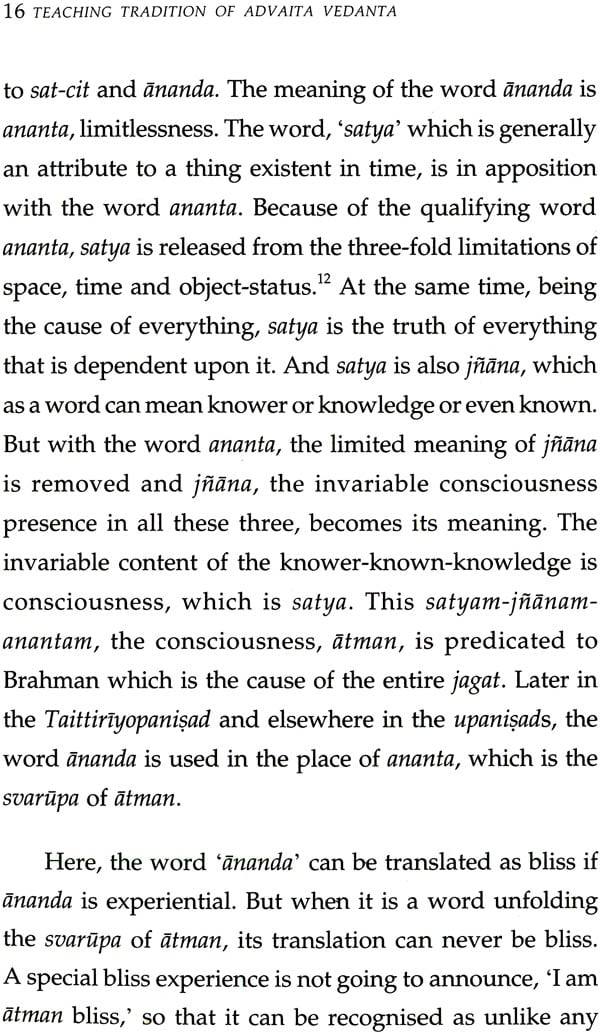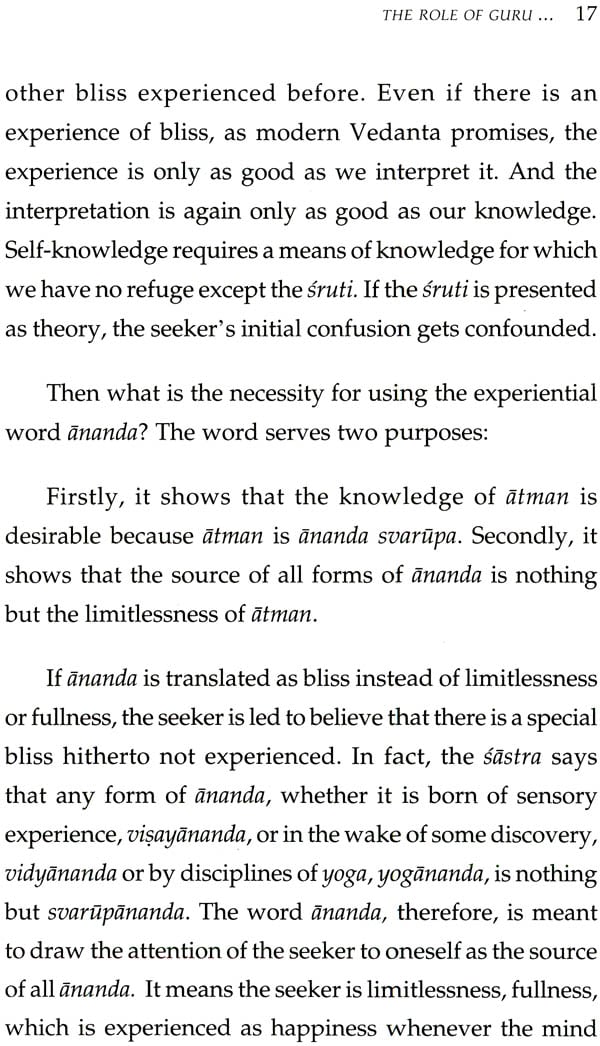
Teaching Tradition of Advaita Vedanta
Book Specification
| Item Code: | IHL688 |
| Author: | Swami Dayananda Saraswati |
| Publisher: | Arsha Vidya Research and Publication Trust |
| Language: | English |
| Edition: | 2009 |
| ISBN: | 9788190605946 |
| Pages: | 42 |
| Cover: | Paperback |
| Other Details | 8.3 Inch X 5.5 Inch |
| Weight | 70 gm |
Book Description
“The teaching tradition of Vedanta is an important as even its vision of oneness. This is so because the vision is solely dependent on the method of handling the words unfolding the vision.
Advaita Vedanta is a teaching tradition. When one receives the teaching from a traditional teacher one also comes to know the whole method of teaching. In the teaching itself is the method discussed. Exposure to a wrong method makes one miss the vision of the teaching. Therefore in this book what is not the teaching including its methodology is discussed. Some of the modern concepts are also examined in this small book. So I recommend this book to every student of Vedanta for serious study.
I call myself a traditional teacher of Vedanta. Teacher of Vedanta should be enough. Why this adjective traditional? I am constrained to use this word for a number of reasons. Many modern academicians as well as several Hindu spiritual teachers present Advaita Vedanta of the Individual soul, jiva with the lord Isvara. For this promised experience certain practices are prescribed which vary from teacher to teacher. In this brief presentation I attempt to analyze some these contentions more to help one see what is traditional Vedanta than to criticize any given person.
Advaita Vedanta
The subject matter of Vedanta is the most desirable hita, for every individual. Analyzing the various ends purusarthas in life such as security artha pleasure Kama and dharma that is punya for the hereafter Vedanta presents moksa, freedom from limitation as the most desirable.
Analyzing these purusarthas, the Mundakopanisad says, the uncreated is not created by an action krta means what is made or created. Akrta means what is not created something real the vastu which exists without being created. The same vastu is presented in other upanisads as satya. The Chandogyopanisad says, before creation this world existed only as sat. since sat existed before the creation of the world which included time it is outside the scope of time and therefore timeless eternal. Being already existent sat is not produced by any action performed. The self atman is equated to this satya and therefore your are satya.
Knowledge of this satya as oneself is the most desirable purusartha. In fact it is the only real end in life paramapurusartha. The Chandogyopanisad also presents the same knowledge as freedom from sorrow now and from the cycle of samsara a life of becoming forever. Self knowledge being the solution to the problem of sorrow the subject matter unfolded by the upanisads, naturally, becomes the most desirable end for a human being. Therefore the Mundakopanisad advises the seeker to go to a teacher who is well versed in the sastra in order to gain self knowledge.
| Preface | v |
| Key to Transliteration | vii |
| Introduction | 1 |
| Is Vedanta a School of Thought? | 3 |
| The Vision and teaching methods in Vedanta | 06 |
| Karana-Karya-Prakriya | 07 |
| Avastha-Traya-Prakriya | 09 |
| Panca-Kosa-Prakriya | 11 |
| Sarvatma-bhava | 13 |
| The Role of Guru in resolving confusions | |
| Atman-bliss confusion | 15 |
| Knowledge and realization confusion | 18 |
| Multi-Path Confusion | 19 |
| Moksa by thought free mind confusion | 23 |
| Vasana-ksaya confusion | 26 |
| Confusion regarding Karma-yoga | 28 |
| Value preaching | 30 |
| Too many words | 30 |
| Notes | 32 |







